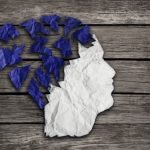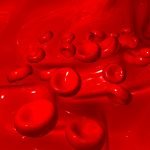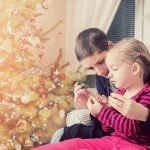Increasing peer awareness of depression also increases help-seeking
Node Smith, ND
A recent paper was published that discusses a new approach to facilitating community awareness of mental health. The approach concentrates on peer-to-peer education and interaction at the high school and junior high level.1 The program is called the Peer-to-Peer Depression Awareness Campaign (P2P).
Peer-to-Peer Depression Awareness Campaign (P2P)
High schools nationwide report that roughly 7.5 percent of teens are likely to experience depression during a given year. Depression is known to be associated with alcohol and drug use, smoking, social and family problems as well as poorer academic performance. Depression is also linked to suicidal thinking. Suicide attempts and death can have a drastic impact on classmates and increasing awareness of depression could influence about seeking help for themselves or helping others to seek the help they need.
Study uses a “peer advocate” structure to actually train students in understanding depression
The study, and the methodology is from the University of Michigan Depression center. It uses a “peer advocate” structure to actually train students in understanding depression, as well as effective methods for listening and interacting with peers who may be struggling with depression. The primary aim is to facilitate an environment that is supportive and allows students to gain information and treatment resources.
Each P2P team at a school worked directly with school faculty and the U-M Depression Center
In all, the original research was conducted with 878 students at 10 high schools. Each P2P team at a school worked directly with school faculty and staff members from the U-M Depression Center. There were one-day training sessions at the beginning of the school year and ongoing support with campaign plan materials and facilitation. The entire program has been turned into a “mentorship manual” for replication at other schools.2
Students exercised flexibility and autonomy with how they designed and implemented the campaign
Students have great flexibility and autonomy with how they design and implemented the specific campaign for their school. The use of videos, posters, assemblies and other resources were used. On average each school included 12 students, and participated in 5 activities as part of their yearly campaign. They all gathered at the U-M Depression Center at the end of the year to report on their efforts.
878 students answered questionnaires before and after the campaign
Through the use of questionnaires given , the following insightful information regarding this program was gained. From the 878 students who participated in the campaign, who answered questionnaires, there was an increased likelihood of the following:
- Confidence in identifying the signs of depression in themselves or others
- Willingness to ask for help if they had depression symptoms for more than two weeks
- Understanding that depression runs in families and cannot be controlled through “willpower”
- Confidence in ability to help friends access mental health services
- Seeking help from other sources such as a teacher, clergy, helpline or coach if they were having a personal or emotional problem
- Comfortability discussing mental health with other students at school
There was also less embarrassment about being seen going to school social worker’s or psychologist’s office associated with having been a part of the campaign.
Five schools in Ann Arbor have already decided to implement the program each year since 2009
Five schools in the Ann Arbor Michigan area have already decided to implement the program each year since 2009, and more schools are becoming interested nationwide.
Sources:
- Parikh SV, Taubman DS, Antoun C, et al. The Michigan Peer-to-Peer Depression Awareness Program: School-Based Prevention to Address Depression Among Teens. Psychiatr Serv. 2018;:appips201700101.
- Manual
Photo by jens johnsson on Unsplash
 Node Smith, ND, is a naturopathic physician in Portland, OR and associate editor for NDNR. He has been instrumental in maintaining a firm connection to the philosophy and heritage of naturopathic medicine among the next generation of docs. He helped found the first multi-generational experiential retreat, which brings elders, alumni, and students together for a weekend camp-out where naturopathic medicine and medical philosophy are experienced in nature. Four years ago he helped found the non-profit, Association for Naturopathic ReVitalization (ANR), for which he serves as the board chairman. ANR has a mission to inspire health practitioners to embody the naturopathic principles through experiential education. Node also has a firm belief that the next era of naturopathic medicine will see a resurgence of in-patient facilities which use fasting, earthing, hydrotherapy and homeopathy to bring people back from chronic diseases of modern living; he is involved in numerous conversations and projects to bring about this vision.
Node Smith, ND, is a naturopathic physician in Portland, OR and associate editor for NDNR. He has been instrumental in maintaining a firm connection to the philosophy and heritage of naturopathic medicine among the next generation of docs. He helped found the first multi-generational experiential retreat, which brings elders, alumni, and students together for a weekend camp-out where naturopathic medicine and medical philosophy are experienced in nature. Four years ago he helped found the non-profit, Association for Naturopathic ReVitalization (ANR), for which he serves as the board chairman. ANR has a mission to inspire health practitioners to embody the naturopathic principles through experiential education. Node also has a firm belief that the next era of naturopathic medicine will see a resurgence of in-patient facilities which use fasting, earthing, hydrotherapy and homeopathy to bring people back from chronic diseases of modern living; he is involved in numerous conversations and projects to bring about this vision.










